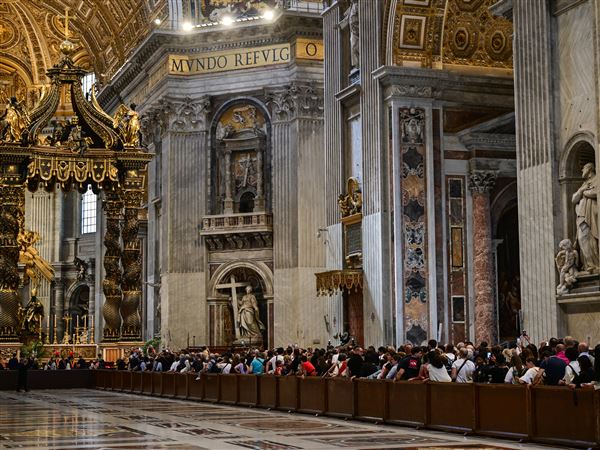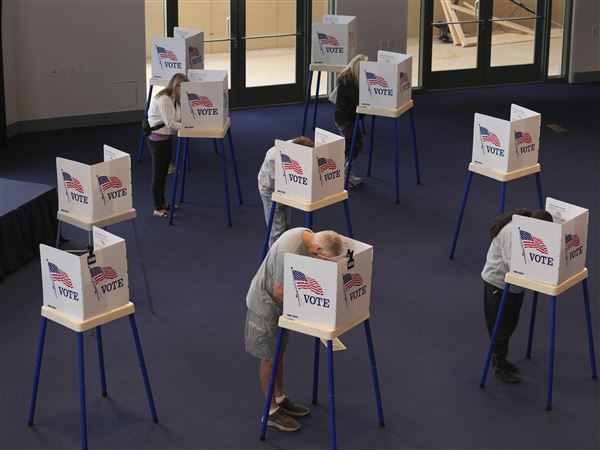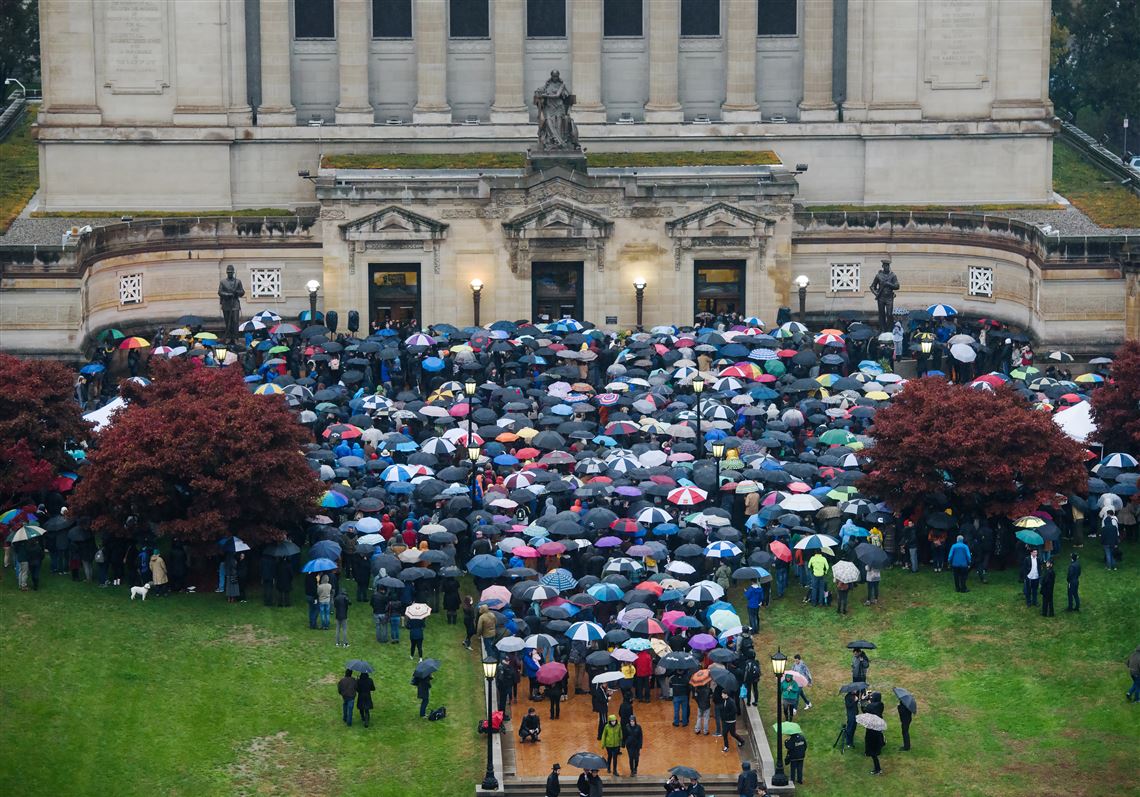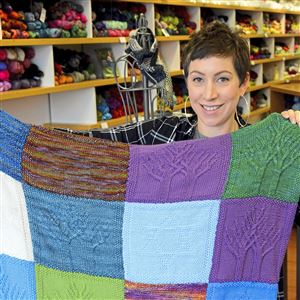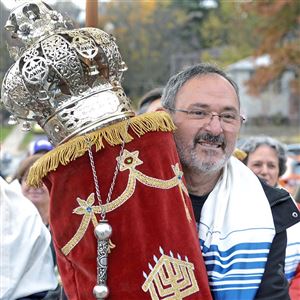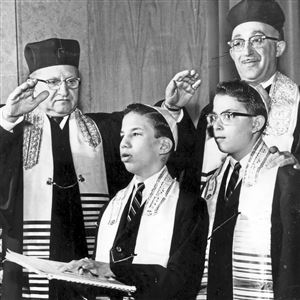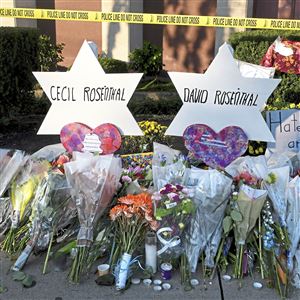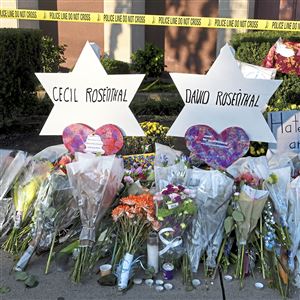About 20 years ago, Rabbi Alvin Berkun gave a sermon at Tree of Life Congregation in which he said it was time to close down all the Jewish “alphabet groups.”
These were the various Jewish advocacy organizations that had sprung up in earlier generations to defend Jews against discrimination and other acts of anti-Semitism, groups known by acronyms like ADL (Anti-Defamation League) and AJC (American Jewish Committee).
It’s not that he lacked evidence for his hopeful outlook.
Rabbi Berkun, the son of European Jewish immigrants who came to this country in 1922 with the help of the Hebrew Immigrant Aid Society (HIAS), could easily have pointed to the stained-glass windows in Pervin Chapel at Tree of Life in Squirrel Hill — windows illustrating a range of Jewish figures finding success in American spiritual, philanthropic, cultural and economic life.
The immigrants’ son was able to see a remarkable progress in interfaith relations and a particularly close cooperation with the leaders and members of the region’s predominant Catholic population. Anti-Semitism seemed at bay, pushed to the fringes.
“Was I ever wrong,” Rabbi Berkun lamented this week.
He’s alive to say that only by chance.
“I was all dressed to go to shul” on Oct. 27.
But his wife wasn’t feeling well, and she said she’d prefer not to be left alone. She was developing a worsening infection that would require hospitalization later in the day.
Normally, Rabbi Berkun would have made the short walk from home to the synagogue he led from 1983 to 2008. Now rabbi emeritus, he would typically find his seat each Shabbat in the back row of the Pervin Chapel. He used to quip that after all that time at the front of the synagogue, he had earned the right to sit in the back.
But that Saturday, he would have been “in the line of fire” there.
Eight of other regulars, who had their favorite spots in the pews to the rear of Pervin Chapel, were shot down by a gunman who police say was breathing anti-Jewish invective. One was wounded, seven were killed, along with four others from two other congregations that shared the building.
Rabbi Berkun spent much of the past week assisting at funerals that drew thousands to the synagogues and chapels that lent their spaces.
The mourners were from as close as Squirrel Hill itself, home to a dozen synagogues and a population ranging from strictly observant Orthodox to those at the moderate and progressive points on the spectrum of Judaism, such as the congregations meeting at Tree of Life.
Other mourners came from far away — the chief rabbi of France, emissaries from the Israeli government.
And, the mourners included representatives from those still-relevant alphabet groups.
Jonathan Greenblatt, CEO of the ADL, was there. His organization was formed a century ago to fight anti-Semitism and other forms of bigotry.
After about 15 years of recording a slight decline in incidents of anti-Semitism ranging from vandalism to outright assault, Mr. Greenblatt said his organization saw a 34 percent spike in anti-Semitic incidents in 2016 nationwide. Last year saw another 57 percent increase.
“Jews have lived with tremendous privilege in this country,” he said Wednesday, standing outside Congregation Beth Shalom after the funeral of one of the victims. “We’ve integrated and excelled in so many fields and still maintained our traditions.”
But “it feels like we’re in a moment where anti-Semitism is being normalized,” he said. “You see this in the way certain phrases and images have moved into the political conversation. You see this in the way that comments, slander are almost disregarded and dismissed.”
It can emerge from the right or the left but really is beyond ideology, a “deranged obsession,” he said.
“If left unattended, anti-Semitism has the ability to explode, like it did right here,” he said.
In a survey of the Pittsburgh region’s Jewish population released earlier this year, 70 percent of Jews said they were at least somewhat concerned about anti-Semitism. The remainder split about evenly between those worried a lot or not at all, according to the study, commissioned by the Jewish Federation of Greater Pittsburgh and conducted by Brandeis University researchers.
Most of the anecdotes cited by local residents were oral, ranging from conversational slights to something shouted from a car. But some reported vandalism or physical threats.
Bradley Orsini, community security director for the Jewish Federation of Greater Pittsburgh, encourages individuals and institutions to report such incidents, including such things as anonymous hate mail.
More than 50 such incidents, mostly oral but a couple of assaults, were reported this year to the federation.
Because there is more diligent reporting than in the past locally, it’s difficult to determine if there’s an increase.
It’s been Mr. Orsini’s job since the start of 2017 to help Jewish synagogues, schools and agencies prepare for just such unthinkable events as an active shooter invasion — to secure buildings where possible and to train people what to do if necessary.
“This is our absolute worst nightmare,” he said days after Saturday’s shootings. “We discuss our absolute worst nightmare so we hopefully can minimize the loss of life and get some people out.”
He has done more than 100 training sessions in the past two years. He has done walk-throughs with synagogue officials all over the Pittsburgh area, assessing security, reviewing paths of entrance and egress, recommending ways to harden or make buildings more impenetrable. It’s up to each congregation to decide which measures to take, a particular dilemma for any religious congregation seeking to balance security with being open and welcoming.
Mr. Orsini had conducted an active-shooter training Sept. 5 for officials at Tree of Life. A direct fruit of that training: Rabbi Jeffrey Myers, who normally would not carry a cell phone to Shabbat services, started doing so.
“He was the one who called 911 to get the incredible lightning-fast response from the Zone 4 officers and then SWAT officers,” Mr. Orsini said. “Because of that, he was able to react, and he did react.”
***
In recent years, though, much of the energy in the Jewish community was flowing toward integration and interfaith cooperation, not training for handling hate crimes.
The most recent Jewish population survey showed a 17 percent growth since the last study in 2002, to nearly 50,000. Squirrel Hill remained the hub of the Jewish residents and institutions, but the Jewish population was increasingly spreading through Pittsburgh’s neighborhoods and suburbs.
There were some downward trends. The more moderate and liberal denominations were seeing a decline in membership, particularly among the young. That is one factor in how three congregations came to meet in the one Tree of Life building, although members also enjoyed the increased vitality in the shared space.
And interfaith cooperation has become a norm for many.
The Roman Catholic Church, the largest single denomination in the region and the nation, had undergone a revolutionary shift at the Second Vatican Council in the 1960s. Then, the bishops cited “the patrimony [the church] shares with the Jews” and rejected all forms of anti-Semitism.
That’s been taken to heart by subsequent popes, including Pope Francis, whom Rabbi Berkun met in 2013 as part of the first Jewish delegation to meet with the then-new pontiff.
And efforts were taking root locally. For many years, rabbis have visited Catholic high schools to teach about Judaism and about anti-Semitism in Christian history.
So strong were the local bonds that one of the first calls Rabbi Berkun received was from the former bishop of Pittsburgh who launched the school program, Cardinal Donald Wuerl, now the outgoing archbishop of Washington, D.C.
Now, with the visible rise of anti-Semitism, partnerships with not just Catholics but also with other faiths in Pittsburgh are on display.
Christian and Muslim leaders spoke in solidarity with Jewish leaders at a quickly organized vigil at Soldiers & Sailors Memorial Hall & Museum in Oakland on Sunday. Behind them stood dozens of other clergy.
That, too, followed years of dialogues and partnerships.
“We believe that clergy need to know each other before we stand on a stage and pretend we know each other,” said Rabbi Ron Symons, senior director of Jewish life at the Jewish Community Center, whose Squirrel Hill branch has been the hub of responses to the shootings. “The reason Sunday night was so powerful was it’s not just a photo op. It’s what we believe.”
***
The gunman posted online rants against Jews, police said, with a particular focus on the refugee resettlement activities of HIAS.
The organization has in recent decades helped resettle refugees from Vietnam, Bhutan, Sudan and elsewhere.
What drew the gunman to the corner of Shady and Wilkins was a recent National Refugee Shabbat, an annual service focused on the plight of refugees, investigators said. Many co-sponsors were listed, among them a local participant, Dor Hadash.
That may have drawn the gunman to the address, but his killing of Jews was indiscriminant. He gunned down elderly people — one was 97 — from all three congregations.
Rabbi Berkun sees it as a “badge of honor” that Tree of Life was sharing space with a congregation with that strong commitment to HIAS and refugees.
And for members of Dor Hadash, it was just part of a much wider commitment. “Justice, justice you shall pursue” is the verse in the Torah that the congregation’s social action committee cites as its ethos.
Typically that can mean things like helping to stock a food pantry or serving a meal at a shelter.
But it can also mean advocacy.
For Wendy Kobee, a member of Dor Hadash’s executive committee, one way to respond to the massacre is with action.
The congregation is part of the Reconstructionist denomination, a small, liberal stream in Judaism. The congregation emphasizes lay leadership and making decisions by consensus. Once a month it holds a service that draws about 60 people. If that had occurred the previous Saturday, many more lives would have been at risk.
But like most Saturdays, a smaller Torah class was being held in the rabbi’s study at Tree of Life.
Ms. Kobee said each member is in a different stage of grieving. Hers is currently one of anger.
She plans to advocate for “meaningful social and political action that can hopefully reverse this tide of actions that seems to have been released since January of 2017.”
One area of concern is the “information pathway, this online community where people are fomenting these hateful kinds of actions.”
And another is the easy availability of firearms that make mass killings so easy once a hater turns from speech to action.
“Why would a person who is not in the armed forces need such a machine?” she asked. “His hatred manifested itself with 11 dead bodies.”
Meanwhile, like the other two congregations, Dor Hadash has to answer basic questions about its future, from where to meet to where to find prayer books now that theirs are at a sealed crime scene.
“It won’t define us,” she said. “We have to keep living.”
Peter Smith: petersmith@post-gazette.com or 412-263-1416; Twitter @PG_PeterSmith.
First Published: November 4, 2018, 1:00 p.m.

